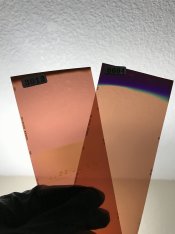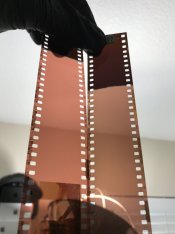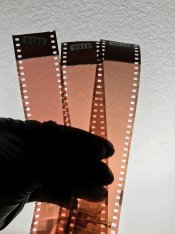Adrian Bacon
Subscriber
I recently came into a batch of Kodak flexicolor SM chemicals that are expiring 02-2018. I decided to run a few rolls of Ektar that I had stacked up through with it and the film base isn't quite the dusty rose color that I've gotten with other kits and from pro labs. I'm wondering if this is something I shouldn't worry about or if it's something wrong with the process I did with these chemicals?
The chemicals in question are Flex dev starter LORR 1.2L, dev replenisher LORR (makes 5L), SM tank fixer, SM tank bleach, and final wash.
I mixed up the dev and replenisher following the package instructions (it makes 6.5 L with a little replenisher left over), the bleach and fixer where used as is.
The process was as follows:
1. get everything up to 100 degrees in a 10 gallon water bath (water pump and bucket heater on a thermostat to maintain temperature, probably not scientific accurate, but way easier to maintain 100 +- 1 than through faucet and uses less water)
2. load the film into a paterson tank
3. pre-soak the film and tank in the the same water bath while staging everything to do the process (usually 4-5 minutes)
4. pour the pre-soak out, pour in the dev and put the lid on
5. every 15 seconds do 1 full inversion and put tank back in bath
6. at 3:05, pull tank out of bath, pour dev out
7. pour in stop bath (1:4 vinegar:water), agitate for 30 seconds let sit for another minute or so while staging the next step
8. pour out stop bath, pour in bleach, put lid on tank, do 2 full inversions every 30 seconds for 6:30
9. pour out bleach
10. rinse with 100 degree water for a couple minutes (dumping water and refilling every 30 seconds)
11. pour in fixer, put lid on, do 2 full inversions every 30 seconds for 6:30
12. pour out fixer
13. rinse the same as step 10, but for closer to 5 minutes
14. final rinse 1:30+, let it sit in it to keep it wet while clearing space to hang up to dry
Attached images between film from pro lab and above described process. Pro lab on the left, my run on the right. Definitely not the dusty rose film base I was expecting to see. I've not yet actually tried to do anything with the images to turn them into positives, but just looking at the negatives directly, they're images of familiar subjects, and don't seem off kilter color wise compared to other negatives of the same subject and light, but I won't know for sure until I scan them in.
Has anybody else had this happen?
The chemicals in question are Flex dev starter LORR 1.2L, dev replenisher LORR (makes 5L), SM tank fixer, SM tank bleach, and final wash.
I mixed up the dev and replenisher following the package instructions (it makes 6.5 L with a little replenisher left over), the bleach and fixer where used as is.
The process was as follows:
1. get everything up to 100 degrees in a 10 gallon water bath (water pump and bucket heater on a thermostat to maintain temperature, probably not scientific accurate, but way easier to maintain 100 +- 1 than through faucet and uses less water)
2. load the film into a paterson tank
3. pre-soak the film and tank in the the same water bath while staging everything to do the process (usually 4-5 minutes)
4. pour the pre-soak out, pour in the dev and put the lid on
5. every 15 seconds do 1 full inversion and put tank back in bath
6. at 3:05, pull tank out of bath, pour dev out
7. pour in stop bath (1:4 vinegar:water), agitate for 30 seconds let sit for another minute or so while staging the next step
8. pour out stop bath, pour in bleach, put lid on tank, do 2 full inversions every 30 seconds for 6:30
9. pour out bleach
10. rinse with 100 degree water for a couple minutes (dumping water and refilling every 30 seconds)
11. pour in fixer, put lid on, do 2 full inversions every 30 seconds for 6:30
12. pour out fixer
13. rinse the same as step 10, but for closer to 5 minutes
14. final rinse 1:30+, let it sit in it to keep it wet while clearing space to hang up to dry
Attached images between film from pro lab and above described process. Pro lab on the left, my run on the right. Definitely not the dusty rose film base I was expecting to see. I've not yet actually tried to do anything with the images to turn them into positives, but just looking at the negatives directly, they're images of familiar subjects, and don't seem off kilter color wise compared to other negatives of the same subject and light, but I won't know for sure until I scan them in.
Has anybody else had this happen?













